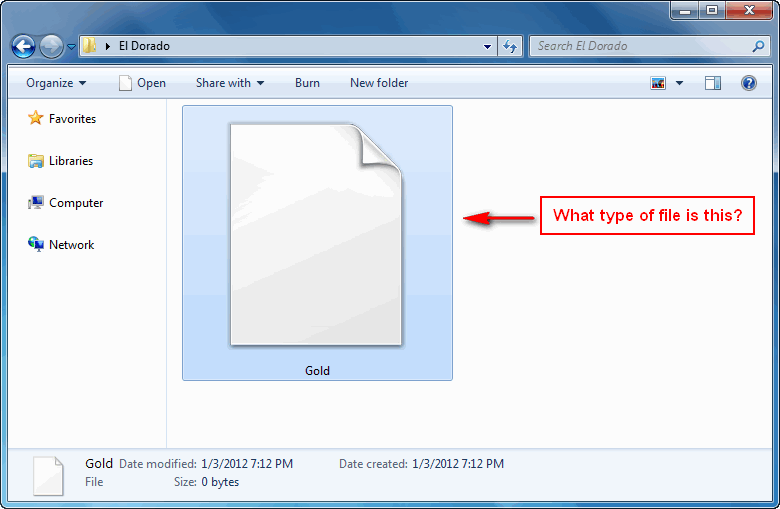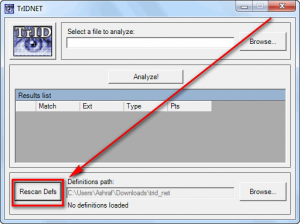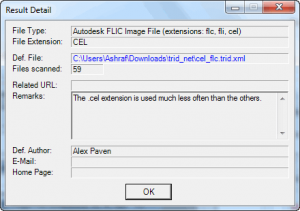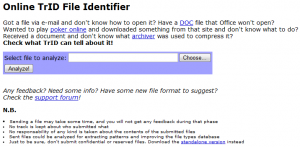Have a file that has no extension? Or maybe you have a file with the wrong extension (e.g. Word cannot open a file that appears to be .DOC)? You can pander around trying to figure out the proper extension for the file or you can use TrIDNet.
What Is TrIDNet
Each file type has a unique signature for it; all files have this file type signature attached to them. TrIDNet is a program that identifies files based off their file type binary signature. But that is all technical jargon. In layman’s terms, TrIDNet scans files and displays what it believes is the file type of the file being scanned.
Once you know what file type a file is, you can add the extension to the file by renaming it (add the extension at the end), and then use FILExt to identify what program is needed to open the file, if you don’t know already.
Using TrIDNet
Setting up TrIDNet
TrIDNet is a portable application, so there is no need to install it; all you need to do is unzip the ZIP file that you download. However, TrIDNet is dependent on file definitions stored in separate XML files. So before you can use TrIDNet, you have to download the XML files that contains the file definitions and load it into TrIDNet. Here is a step-by-step guide on how to get TrIDNet up and running:
- Download and unzip the ZIP file that contains TrIDNet.
- Download and unpack the RAR file that contains the XML files with file definitions into the same folder where you unzipped the ZIP file. (If you unpack the RAR into a different folder, copy + paste all the contents into the same folder where you unzipped the ZIP file — the same folder that contains TrIDNet.exe.)
- Run TrIDNet.exe.
- From TrIDNet’s main program window click on the Rescan Defs button:
- Wait while the definitions are loaded.
- Done.
Scanning Files
Once you have setup TrIDNet, scanning files is as easy as either dragging + dropping a file onto the main program window or using the Browse button at the top to select a file. Once you load a file into TrIDNet, TrIDNet automatically scans it and returns the file type:
You may get multiple results back; whatever file type has the highest Match value is most likely the right one.
Depending on how the file type definition was written, by double-clicking the gray area next to the results (the area next to the Match column) you will get a little bit more info on the file type:
Shortcomings
Obviously TrIDNet is only as good as the definitions it is provided. (If you think you have better or more definitions than what the developer provides, you can create your own XML file(s).) Aside from that obvious dependency, TrIDNet doesn’t have batch processing, i.e. you can only scan one file at a time; TrIDNet doesn’t work with 0 byte files (for obvious reasons — a file can’t have a file type signature if it is zero bytes); drag + drop can be buggy at times, so you are better off using the Browse button; and, for some reason, TrIDNet doesn’t save the file definitions — you must do Rescan Defs every time you run it.
Online Version
TrIDNet requires .NET Framework. The developer doesn’t specify exactly what version of .NET Framework but the program was originally written in 2003 and last updated in 2004; so it likely requires .NET Framework 1.0/1.1 — something you already have installed on your computer if you have a Windows XP or later machine. However, if you don’t have .NET Framework (maybe you manually uninstalled it) then you can use TrIDNet’s online version:
Note: TrIDNet is over seven years old but the XML files containing file definitions were last updated December 29, 2011 — the definitions are up-to-date.
Conclusion
It doesn’t have batch processing and you need to scan for definitions every time you run it, but still TrIDNet is one of those tools you just want to have around in case you need it.
You can grab TrIDNet and XML files containing file definitions, and access TrIDNet’s online version from the links below:
Version reviewed: v1.80
Supported OS: Win 98/ME/NT/2000/XP
Works just fine on Win7 and probably works just fine in Vista
Requires .NET Framework 1.0/1.1
Download size: Less than 1 MB for both downloads
Malware status: VirusTotal – 0/43 (TrIDNet) | 0/43 (XML files)
[Direct download – XML files with file definitions]
[via Digital Inspiration]

 Email article
Email article








